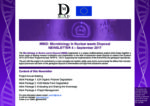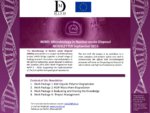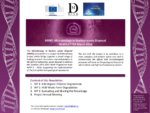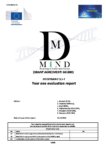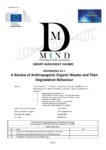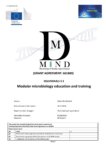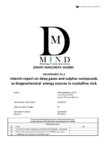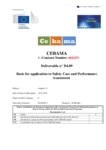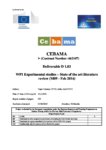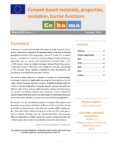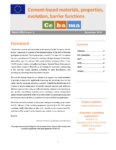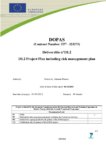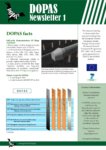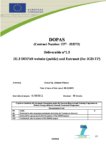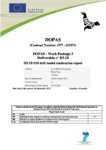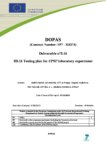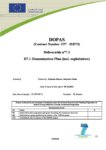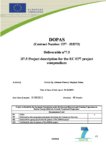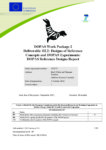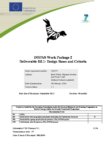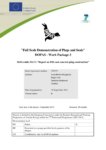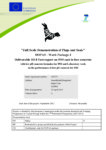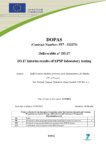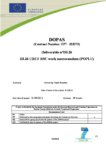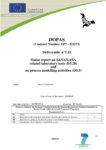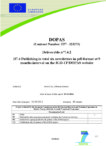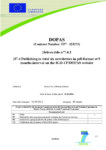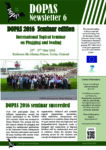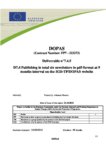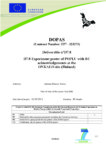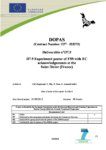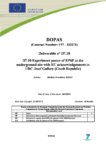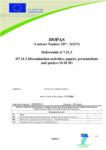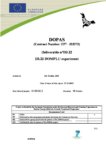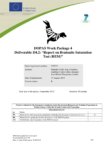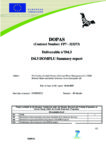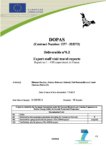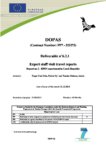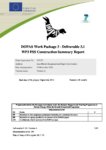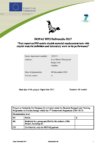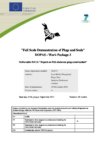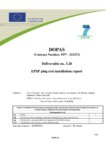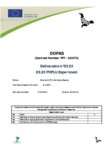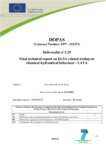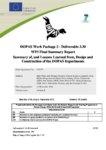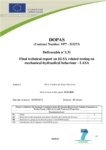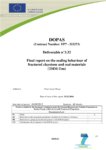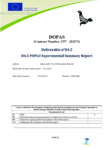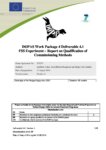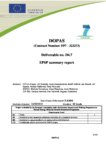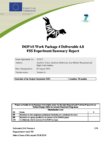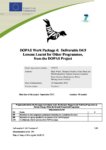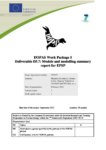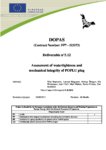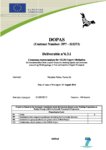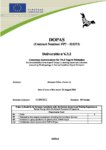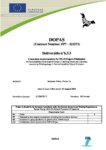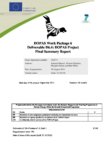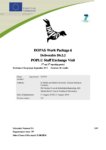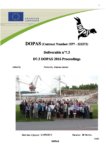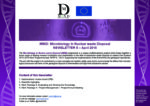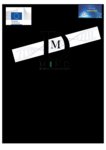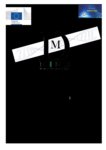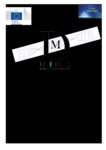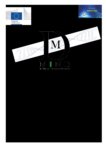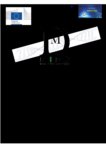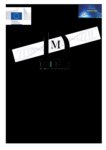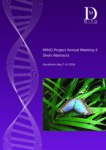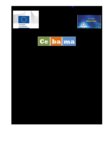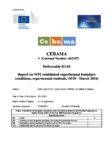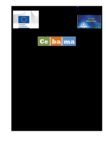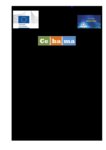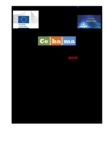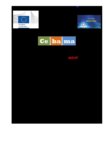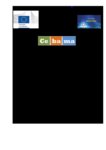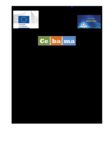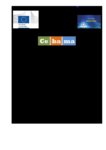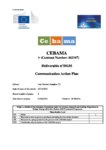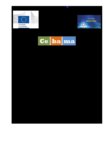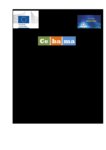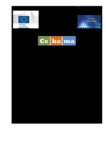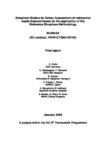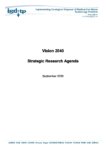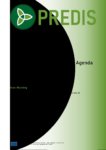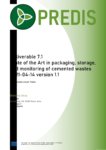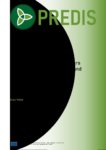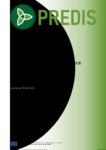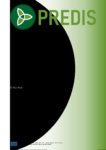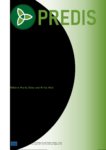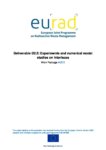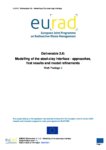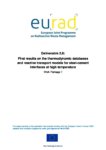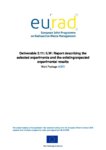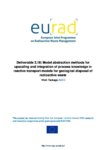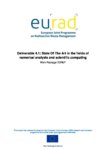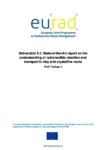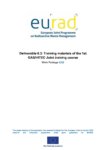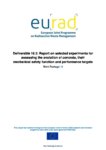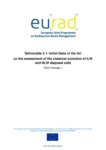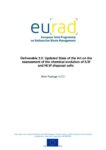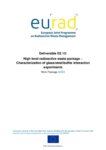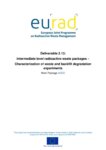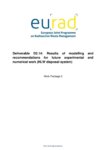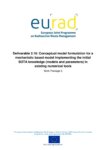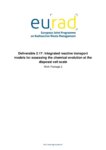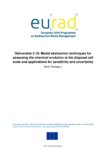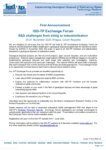Key Topic 3: Technical Feasibility and Long-term Performance
Overview
This research area involves RD&D activities for demonstrating and optimising technology and construction[1] of a repository and disposal components. This includes confirmation of a feasible and safe operational phase, as well as ensuring that the specified safety functions[2] will be provided over the required time frame after closure. Included are surface-based and underground works as well as construction technologies for waste containers (including waste encapsulation or overpacking facilities), buffer, backfill, plugs and seals. Also included is the demonstration of construction and operations of the repository and its components. It is noted that the requirements for the definitions of these materials and their associated properties are in many cases specific to the host rock and repository design concepts. Furthermore, this Key Topic addresses understanding of the repository components’ long-term performance and the maintenance of their safety functions. While reference is often made to repositories, this topic also includes technical feasibility and long-term performance for other concepts that might require RD&D.
[1] Construction includes the manufacturing of components and their emplacement.
[2] The post-closure safety functions generally include containment of waste for a required period and limitation of groundwater and solute transport, including retention of radionuclides.
Objective
The first objective (a) for Key Topic 3 is to demonstrate, to the level typically required by national licensing approaches, that the technical design requirements based on safety of construction and operations, safety during the post-operational transient phase, and long-term safety after closure, can be met in practice by available construction technologies and related working procedures. This includes confirmation of repository components against pre-defined design specifications to determine their state before closure and extends to optimising operations and costs over the lifetime of a repository. As a consequence, this objective contributes strongly to the first and second pillars, “Safely Operate” and “Optimise and industrialise”, of the 2040 Vision.
The second objective (b) consists of showing that the system demonstrated, according to objective (a), will provide all the safety functions needed for the system as a whole to fulfil the long-term safety criteria. This requires that the evolution of the engineered components and materials is sufficiently understood in the actual repository conditions over the specified timeframe. Because of the relationship between technical design requirements and long-term performance requirements these usually must be defined iteratively. In this context, robust design may be necessary to account for uncertainties. The second objective contributes mainly to the second pillar, “Optimise and industrialise”, of the 2040 Vision, with some contributions also to the third pillar, “Tailor solutions”.
Each component needs to fulfil the design criteria based on the specified safety functions of the repository and meet the qualifications defined in the regulations.
Related Documents
Description: Fourth MIND newsletter published in September 2017 (version 2).
Last updated: October 20, 2017
Description: Third MIND newsletter published in March 2017.
Last updated: March 20, 2017
Description: Second MIND newsletter published in October 2016.
Last updated: October 20, 2016
Description: First MIND newsletter published in March 2016.
Last updated: March 20, 2016
MIND 2017 D3.4 Year 2 Synthesis Report
Description: MIND deliverable D3.4 published July 2017. This report is a synthesis of the outcome of the experimental and modelling research activities in MIND WP1 and WP2, performed over the first 2 years of the project. The scope of the report is broad, covering all completed scientific and ‘in progress’ projects contained within MIND. The emphasis in this report is on the description of the degradation processes that can be expected and the environmental boundary conditions under which they can occur. The kinetics of these processes are not featured prominently here, but will become an increasingly prioritised aspect of the MIND project throughout the remainder of its tenure, and a next update of this report.
Last updated: July 20, 2017
MIND 2016 D3.1 Year 1 Evaluation Report
Description: MIND deliverable D3.1 published October 2016. This year one evaluation report of MIND consists of two parts. The first part is a description of the state of the art of geological disposal of radioactive waste, with a special reference to microbiological issues. The second part is the first year evaluation of the microbial processes studied in MIND Work Packages 1 and 2.
Last updated: October 20, 2016
MIND 2015 D1.1 A Review of Anthropogenic Organic Wastes and Their Degradation Behaviour
Description: MIND Deliverable D1.1, published December 2015. Work Package 1 of the MIND project addresses remaining key issues for the geological disposal of ILW concerning the long-term behaviour, fate and consequences of organic materials in the waste along with H2 generated by corrosion and radiolysis. This review begins this work by collating information concerning the inventory and nature of organic materials present in ILW and some LLW that requires geological disposal. The review has then considered the physical and chemical conditions that the organic materials will be subjected to during storage and geological disposal. The review then provides a summary description of the physical and chemical nature of the main organic materials present in ILW and their known chemical and radiolytic degradation behaviour. The effect of the organic degradation products on radionuclide speciation, which could affect how some radionuclides are transported in groundwater, is then considered to focus subsequent work in this field.
Last updated: December 20, 2015
MIND 2016 D2.1 Inventory of reducing gases
Description: MIND Deliverable D2.1, published November 2016. In order to provide data needed to address the question on geochemical constraints of biological activity at spent nuclear fuel waste repository sites, geochemical data of dissolved gases from deep drill holes and mines in Finland and Sweden were collected based on a literature and database survey. Gas data were found from 20 separate localities in Finland with the deepest drill holes extending down to 2500 m below surface. The gas phase is dominated by nitrogen and methane, although significant variation exists between different sites and with depth. At least partly this variation can be related to differences in lithology (rock types) and residence time of water within the bedrock. Corresponding data from Sweden were from 2 localities extending to at most 1000 m below surface.
Last updated: November 20, 2016
MIND 2016 D3.3 Modular microbiology education and training
Description: MIND Deliverable D3.3, published November 2016. The overall aim of both the education and training initiatives in MIND is to cultivate awareness of the relevance of microbial issues in otherwise typically abiotic fields of expertise, and dissipate the knowledge gained in the MIND project beyond the known geomicrobiology expert circles. For this reason, modular training courses were developed, an exchange programme for Master and PhD students has been developed and focused communication on these initiatives has been undertaken.
Last updated: November 20, 2016
Description: MIND Deliverable D2.3, published August 2017. Geochemical data on sulphur compounds and dissolved gases from deep drill holes and deep mines in Finland were compiled into a database. Data is used as background for MIND work package 2, in which microbial production of sulphide in the geosphere will be assessed from the point of view of canister corrosion. This report summarises the present knowledge on the mode of occurrence of sulphur compounds and dissolved gases in groundwaters of crystalline bedrock. Prerequisites of microbial sulphate reduction are discussed based on the data available.
Last updated: August 20, 2017
MIND 2019 D2.4 Bacterial presence and activity in compacted bentonites
Description: MIND Deliverable D2.4, Version 2, published April 2019. It has been hypothesised that cut-off bentonite density thresholds exist above which all bacterial activity stops or is inhibited to a such a level that it can be regarded as negligible. This report discusses if that hypothesis can be considered true or if more variables other than clay density determine bacterial activity in bentonites. The clays analysed and discussed in this report have been investigated previously. This deliverable summarizes previously performed work and new work performed within MIND.
Last updated: May 2, 2019
Cebama 2016 D4.08 1st Annual Project Workshop Proceedings
Description: Cebama deliverable D4.08, published November 2016. This document contains the proceedings of the First Annual Workshop (AWS) of the Cebama project.
Last updated: November 20, 2016
Cebama 2016 D4.09 Basis for application to Safety Case and Performance Assessment
Description: Cebama deliverable D4.09, published January 2017. This report series aims at interpreting how the results of the research conducted within CEBAMA can be applied and contribute to the Safety Case. This is the first of two reports, which will be updated at the end of the project. Given the complexity of the experiments and the models developed within CEBAMA, it is in general too early at PM18 for the partners to produce results directly applicable to the Safety Case. Nevertheless, we present here some briefing on the impact aimed at within the project and highlight the value of some of the work undertaken to date.
Last updated: January 20, 2017
Cebama 2016 D1.03 WP1 Experimental studies – State of the art literature review (M09 – Feb 2016)
Description: Cebama deliverable D1.03, published March 2016. This report is an initial state-of-the-art literature review in the CEBAMA–project for work package 1. Chapters are written by the participants of CEBAMA and the chapters serve as state-of-the-art reviews for the the experimental research conducted by various partners.
Last updated: March 20, 2016
Description: First Cebama newsletter, published February 2016.
Last updated: February 20, 2016
Description: Second Cebama newsletter, published November 2016.
Last updated: November 20, 2016
Description: Third Cebama newsletter, published June 2017.
Last updated: June 20, 2017
Description: 2013 DOPAS D1.2 Project Plan including risk management plan
Last updated: April 23, 2018
DOPAS 2013 D1.3 Website and Extranet
Description: 2013 DOPAS D1.3 Project website (public) and Extranet (for IGD-TP)
Last updated: April 23, 2018
DOPAS 2013 D3.10 FSS Drift Model Construction Report
Description: This report gives an overview of the tunnel (drift) model (also called the “test box” in the text) construction story, as built for the needs of Andra’s FSS experiment. It includes an overview of the main construction phases (illustrated by photos) c/w practical details and dates.
Last updated: April 23, 2018
DOPAS 2013 D3.16 EPSP Laboratory Experiment Testing Plan
Description: This report presents the plan of laboratory works related to the EPSP experiment. The laboratory work will provide data for the subsequent numerical analysis of EPSP behaviour (WP5). Three groups of data will be produced – input material parameters, material parameters from verification testing (the occasional checking for possible changes as the project progresses) and data from small-scale physical models to be used for the validation of the numerical models.
Last updated: April 23, 2018
DOPAS 2013 D7.1 Project Dissemination Plan
Description: Dissemination Plan including exploitation with list of tentative dissemination activities. This plan describes the planned dissemination activities, mechanisms, target groups, and how the dissemination activities are implemented. Exploitation will be updated in the end of DOPAS project.
Last updated: April 23, 2018
DOPAS 2013 D7.5 Project Description for the EC FP7 Project Compendium
Description: This Deliverable will be published within Volume IV synthesis brochure of Euratom fission projects selected from the 2012 and 2013 later and includes proposed text from DOPAS project and pictures to be used in brochure.
Last updated: April 23, 2018
DOPAS 2014 D7.11.1 Dissemination Activities – Press Releases 0-18M
Description: Compilation of press releases published during the first 18 months of the DOPAS project. Appendix 1 Press release published by Posiva in December 2012 Appendix 2 Press release published by Posiva in December 2012, in Finnish Appendix 3 Press release published by Andra in of January 2013, in French Appendix 4 Press release published by Nagra in April 2013 Appendix 5 Press release published by Nagra in April 2013, in German
Last updated: April 23, 2018
DOPAS 2014 D7.11.4 Dissemination Activities – Other 0-18M
Description: Compilation of other dissemination activities published during the first 18 months of the DOPAS project. Appendix 1 FSS progress video by Andra, which can be seen in DOPAS public web page. Appendix 2 VTT Intranet news
Last updated: April 23, 2018
DOPAS 2014 D2.2 Designs of Reference Concepts and DOPAS Experiments: DOPAS Reference Designs Report
Description: This report is Deliverable D2.2 of DOPAS, and describes the reference and experiment designs for the full-scale plugs or seals being investigated within DOPAS.
Last updated: April 23, 2018
DOPAS 2014 D2.1 Design Bases and Criteria
Description: Work Package 2 (WP2) of the DOPAS Project is focusing on the design basis, reference designs and strategies used to demonstrate the compliance of the installed plugs and seals to the design basis. This report (Deliverable D2.1) presents the design basis of the five full-scale experiments and laboratory tests, and the process used by each WMO to develop it.
Last updated: April 23, 2018
DOPAS 2014 D3.11 Report on FSS Cast Concrete Plug Construction
Description: This report D3.11 gives an overview of the work implemented at FSS test site (Saint-Dizier) to construct the low pH self-compacting concrete (aka SCC) plug (the first component of the FSS experiment), i.e. the upstream concrete containment wall which was erected in July 2013.
Last updated: April 23, 2018
DOPAS 2014 D3.8 Test Report on FSS Cast in Box Concrete
Description: This report combines information on low pH SCC development into the one Deliverable D3.8 including information originally planned for D3.4 Report on low-pH concrete formulas for FSS; D3.6 Lab report on the performance of low-p H concrete for FSS and D3.8 Test report on FSS cast in-box concrete.
Last updated: April 23, 2018
DOPAS 2014 D3.17 Interim Results of EPSP Laboratory Testing
Description: This report presents up-to-date results of laboratory work related to the EPSP experiment. The laboratory work will provide data for the subsequent numerical analysis of EPSP behaviour (WP5). Bentonite parameters were determined and compared with other bentonites from the Czech Republic.
Last updated: April 23, 2018
DOPAS 2014 D3.26 URCF RSC Work Memorandum (POPLU)
Description: To verify the suitability of the plug demonstration tunnel locations in Underground rock characterisation facility (URCF) ONKALO and to select the location for the plug within the tunnels, the Rock Suitability Classification (RSC) -system developed by Posiva Oy has been applied. A short description of the RSC-system is given in Chapter 2 of this memorandum, with the host rock classification criteria pertaining to the plug summed in Chapter 3. The two suitability classifications carried out to determine a suitable location for the POPLU plug are presented in Chapters 4 and 5 with short concluding remarks made in Chapter 6.
Last updated: April 23, 2018
Description: This report presents the work performed by GRS as part of the European project DOPAS under WP3 Task 2 Design and technical construction feasibility of the plugs and seals and WP5 Task 1 Performance assessment of plugs and seals systems. This report is one of three status reports, which combines information from both Work package 3 and Work Package 5 into a new Deliverable D5.11. LASA project stands for long-term stable shaft seal in salt formations.
Last updated: April 23, 2018
DOPAS 2014 D7.7 Experiment poster of DOMPLU at Äspö (Sweden)
Description: This Deliverable shows the DOMPLU Experiment poster which has been emplaced in the Äspö hard Rock laboratory.
Last updated: April 23, 2018
DOPAS 2014 D7.8 Experiment poster of POPLU at ONKALO (Finland)
Description: This Deliverable shows the POPLU Experiment poster (Appendix 1), which will be emplaced in the front of the ONKALO Demonstration tunnel 4, where the plug will be constructed. Construction work is ongoing and therefore the poster has not been emplaced to the underground location yet. The poster has been ready since September 2013. This poster is linked also from DOPAS public webpage http://www.posiva.fi/dopas under WP3 and Experiment 4 POPLU since October 2013.
Last updated: April 23, 2018
DOPAS 2014 D7.9 Experiment poster of FSS at Saint Dizier (France)
Description: This Deliverable shows the FSS Experiment poster which has been emplaced in the Saint Dizier beside the FSS Experiment.
Last updated: April 23, 2018
DOPAS 2014 D7.10 Experiment poster of EPSP at URC Josef Gallery (Czech Republic))
Description: This Deliverable shows the EPSP Experiment poster which has been emplaced in the Josef Underground Laboratory
Last updated: April 23, 2018
DOPAS 2014 D7.11.3 Dissemination activities, papers, presentations and posters (0-18 M)
Description: Compilation of papers, presentations and posters published during the first 18 months of the DOPAS project. Most of the papers, presentations are available via organisers internet pages and the source are referred also in the DOPAS public web page. In some cases also the papers, presentations and posters are available at DOPAS public web page. Type of audience, size of audience and countries addresses are listed in EC database SESAM dissemination activities list. The presentations held in internal IGD-TP events (like EG meetings and Exchange forums) are not attached in this Deliverable while they are published within SecIGD2 Deliverables.
Last updated: April 23, 2018
DOPAS 2014 D6.1.1 Pilot EE consensus memorandum for D3.25 POPLU test plan
Description: A pilot expert elicitation was carried out on the test plan of the POPLU experiment (D3.25) with the purpose of assisting the planning of the integrating expert analysis (Task 6.1 of the WP6) using the EE process for the quality assurance of the project deliverables. This deliverable describes briefly the pilot EE process, the tools used in it and the outcome of the process in the form of a consensus memorandum. The input of the EE process was used in the finalisation of the POPLU test plan.
Last updated: April 23, 2018
DOPAS 2015 D3.22 DOMPLU experiment
Description: This Deliverable shows the DOMPLU Experiment, which has been emplaced in the Äspö Hard Rock laboratory.
Last updated: April 23, 2018
DOPAS 2015 D4.2 Bentonite Saturation Test (REM)
Description: This report is Deliverable D4.2 of DOPAS WP4, and describes the “Bentonite saturation Test (REM)” carried out by Andra at a metric scale, with the same bentonitic material (pellets and powder admixture) as that employed in the construction of the FSS swelling core (construction experiment carried out in Saint-Dizier, within the frame of WP3activities). This saturation test is instrumental in comforting the knowledge and in the modelling of the bentonite seal behaviour (i.e. its saturation phenomenology), since the characterization work of the bentonitic material was anteriorly carried out at a pluricentimetric scale only (in “ordinary” oedometers): in summary, following the saturation course at a metric scale is more representative of real phenomena happening in a decametric core than doing so at a centimetric scale. This document D4.2 presents the links between the FSS construction and the saturation experiment. The experimental set-up and the way its phenomenological functioning will be monitored throughout 10 to 30 years are detailed (doing so at the FSS core decametric scale would take… thousands of years!). The very first experimental outcomes provided by REM are indicated.
Last updated: April 23, 2018
DOPAS 2015 D4.3 DOMPLU Experiment Summary Report
Description: This report summarizes four years of system design development for the KBS-3V deposition tunnel plugs, carried out in cooperation between SKB and Posiva Oy. The report summarizes the main events of the work in the full-scale test of the Dome plug. This report is also published as SKB TR-14-23.
Last updated: April 23, 2018
DOPAS 2015 D5.1 Modelling plan for Experiment 2 EPSP PA
Description: This report outlines the modelling plan for an experimental pressure and sealing plug (EPSP). The EPSP experiment is not intended to test a specific plug or seal; rather it has been constructed at a similar scale to a real disposal tunnel plug and will contribute specifically to the development of the reference design for such structures. Modelling will focus primarily on the analysis of the THM properties of the various EPSP components.
Last updated: April 23, 2018
DOPAS 2015 D6.2 Expert staff visit travel reports – Report no 1 – FSS experiment in France
Description: This report is a Deliverable within WP6, and describes the objectives and outcomes of a staff exchange visit to the FSS test in Saint Dizier (France) on 10-13 June 2014.
Last updated: April 23, 2018
Description: This memorandum summarises the quality assurance outcomes of the expert elicitation that was carried out for the DOPAS Work Package 2 final report draft D2.4 dated 21 August 2015. The elicitation was carried out during 1 September 2015 to 24 November 2015.
Last updated: April 23, 2018
Description: This report is a Deliverable within WP6, and describes the objectives and outcomes of a staff exchange visit to the Experimental Pressure and Sealing Plug (EPSP) experiment in the Joseph Underground Research Centre (Czech Republic) on 12-14 November 2014.
Last updated: April 23, 2018
DOPAS 2016 D2.4 WP2 Final Report – Design Basis for DOPAS Plugs and Seals
Description: This report provides a synopsis of the work undertaken in WP2. The report describes the safety functions, the designs, and design basis of plugs and seals considered in the DOPAS Project. The report includes an analysis and discussion of the differences between the design bases for plugs and seals in different repository concepts, focusing on the safety functions performed by each plug and seal, and how these impact on the requirements placed on the plug/seal. This report also describes the learning from WP2 on the processes used to develop and structure the design basis for plugs and seals within the DOPAS Project, and uses that learning to provide guidance on the development of a design basis in the context of repository plugs and seals. In particular, lessons are drawn on the iterative development of the design basis for plugs and seals, in parallel with development of the design, as well as the use of hierarchical structures to describe the design basis.
Last updated: April 23, 2018
DOPAS 2016 D3.1 WP3 FSS Construction Summary Report
Description: This report is Deliverable D3.1 in the DOPAS Project and is part of WP3. The objective of this report is to provide an integrated summary of the work undertaken for the design and construction of the scale 1:1 experiment called FSS (Full Scale Seal), carried out by Andra, with the scientific support of NAGRA. A parallel report, DOPAS Deliverable D4.8 in WP4, discusses the performance of the FSS experiment and the feedback to the design basis.
Last updated: April 23, 2018
Description: This report DOPAS WP3 Deliverable D3.7 first gives an overview of the laboratory work, carried out in order to define the most suited clayish (bentonitic) material for the needs of Andra’s FSS experiment, i.e. building a swelling clay core inside a test box (drift model), with the relevant “emplaced dry density” value and the adequate permeability performance and the most suited swelling pressure. The material used is a mix of WH2 (a bentonite brand equivalent to MX80) based pellets and powder (made of crushed pellets). It is also tested in the REM Experiment (a 10-30 year long hydration test in a metric test cell), coming as a complement to FSS, in order to assess the material performance at a scale which is ten times that of the tests carried out in lab (at a decimetric scale, over a few months) and provide data to further modelling.
Last updated: April 23, 2018
DOPAS 2016 D3.13 Report on FSS shotcrete plug construction
Description: This report D3.13 gives an overview of the work implemented at the FSS test site (in Saint- Dizier) to construct the low pH shotcrete plug (one of the 3 components forming the FSS seal), i.e. the “downstream” concrete containment wall, which was erected in September 2014.
Last updated: April 23, 2018
DOPAS 2016 D3.14 EPSP Experiment (demonstration)
Description: The EPSP plug has been designed as a prototype plug for a future Czech deep geological repository. It is expected therefore that similar plug will function during the whole of the operational phase of the repository, i.e. 150 years with an expected over-pressure of up to 7MPa. The D3.14 “EPSP experiment (demonstration)” is demonstration action which provides information on successfully installed and running experiment.
Last updated: April 23, 2018
DOPAS 2016 D3.20 EPSP plug test installation report
Description: The EPSP plug has been designed as a prototype plug for a future Czech deep geological repository. It is expected, therefore, that similar plugs will be required to function throughout the whole of the operational phase of the repository, i.e. 150 years with an expected over-pressure of up to 7MPa. The D3.20 “EPSP plug test installation report” provides information on the installation of the experiment and the experience gained.
Last updated: April 23, 2018
DOPAS 2016 D3.21 Final Results of EPSP Laboratory Testing
Description: The aim of the DOPAS project is to address the design basis of, and reference designs and strategies for, plugs and seals to be used in geological disposal facilities. The Czech “Experimental Pressure and Sealing Plug” (EPSP) experiment is aimed at the study of developments concerning the design basis and reference designs. This report summarises the results of laboratory work related to the EPSP experiment.
Last updated: April 23, 2018
DOPAS 2016 D3.23 POPLU Experiment
Description: This Deliverable shows the POPLU Experiment, which has been emplaced in the demonstration area in ONKALO, Olkiluoto, Finland.
Last updated: April 23, 2018
Description: This report presents the work performed by GRS as part of the European project DOPAS (Full scale Demonstration of Plugs and Seals) under WP 3 task 2 and WP 5 task 1 on “Design and technical construction feasibility of the plugs and seals” and “Performance assessment of plugs and seals systems”. The work is related to the research and development on plugging and sealing for repositories in salt.
Last updated: April 23, 2018
Description: This report is Deliverable D3.30 of the DOPAS Project, the final summary report of WP3. The objective of this report is to provide an integrated summary of the work undertaken and the lessons learned in the DOPAS Project related to the detailed design and construction of the full-scale experiments. A parallel report, DOPAS Deliverable D4.4 discusses the performance of the experiments and the feedback to the design basis.
Last updated: April 23, 2018
Description: This report presents the work performed by GRS as part of the European project DOPAS (Full scale Demonstration of Plugs and Seals) under WP 3 task 2 and WP 5 task 1 on “Design and technical construction feasibility of the plugs and seals” and “Performance assessment of plugs and seals systems”. In the German concept for the final disposal of radioactive and hazardous wastes in salt formations, cements and cement-based systems are proposed as technical barriers (shaft and drift seals). Due to the specific boundary conditions in salt host rock formations these materials (salt and sorel concretes) contain crushed salt instead of sand or gravel. The programme aims at providing experimental data needed for the theoretical analysis of the long-term sealing capacity of these sealing materials.
Last updated: April 23, 2018
Description: This report presents the work performed by GRS as part of the European project DOPAS (Full scale Demonstration of Plugs and Seals) under WP 3 task 2 and WP 5 task 1 on “Design and technical construction feasibility of the plugs and seals” and “Performance assessment of plugs and seals systems”. This subproject performed more comprehensive experiments on the claystone-bentonite mixture in comparison with pure bentonite and bentonite-sand mixture. The seal materials were characterized in terms of key geotechnical properties. The sealing behaviour of the excavation damaged claystone (EDZ) that will play an important role in the long-term seal performance of the plug/seal systems was also studied.
Last updated: April 23, 2018
DOPAS 2016 D4.5 POPLU Experimental Summary Report
Description: This report gives an overview on all aspects of the POPLU construction, with attention to requirements, design, modelling, materials, instrumentation, construction and performance assessment based on pressurization to 4.1 MPa. The report provides insight about lessons learned and comparison to SKB’s DOMPLU plug, representing Posiva’s reference design. The report builds upon earlier deliverables of DOPAS WP2 and WP3, noting any deviations during construction of the full-scale plug at ONKALO.
Last updated: April 23, 2018
DOPAS 2016 D4.1 FSS Experiment – Report on Qualification of Commissioning Methods
Description: This present report “FSS Experiment Report on Qualification of Commissioning Methods” is Deliverable D4.1 of the DOPAS Project, and is part of WP4. This Deliverable addresses the issues of commissioning and investigations methods as they have been implemented in the full-scale experiment FSS (during its construction and later during its dismantling) within the course of the DOPAS Project.
Last updated: April 23, 2018
Description: This report is Deliverable D4.4 of the DOPAS Project, and is part of WP4. This work package addresses the performance evaluation of the full-scale experiments in the DOPAS Project. Deliverable D4.4 is the integrated report of WP4. The objectives are to provide an integrated state-of-the-art summary of the outcomes of WP4 of the DOPAS Project, including the main findings of WP2 and WP3, to evaluate the performance of the plugs and seals with respect to their ability to meet the safety functions specified in disposal concepts, and to present the technical and operational issues that have been resolved in the project. This report provides an integrated summary of the progress in design, site selection and characterisation, construction, monitoring and performance, in relation to plugs and seals considered in waste management programmes. The report describes the progress at the time of writing.
Last updated: April 23, 2018
DOPAS 2016 D4.6 Monitoring data from the EPSP plug test summary report
Description: The aim of the DOPAS project is to address the design basis of, and reference designs and strategies for, plugs and seals to be used in geological disposal facilities. The Czech experiment “Experimental Pressure and Sealing Plug” (EPSP) is aimed at the study of developments concerning the design basis, reference designs and strategies including compliance issues. The EPSP plug has been designed as a prototype plug for a future Czech deep geological repository. It is expected, therefore, that similar plugs will be required to function throughout the whole of the operational phase of the repository, i.e. 150 years with an expected over-pressure of up to 7MPa. The D4.6 “Monitoring data from the EPSP plug test summary report” provides information on the monitoring data gathered during the erection and subsequent conducting of the experiment.
Last updated: April 23, 2018
DOPAS 2016 D4.7 EPSP summary report
Description: The aim of the DOPAS project was to address the design basis of, and reference designs and strategies for, plugs and seals to be used in geological disposal facilities. The Czech experiment “Experimental Pressure and Sealing Plug” (EPSP) was aimed at the study of developments concerning the design basis, reference designs and strategies including compliance issues. The EPSP plug was designed as a prototype plug for a future Czech deep geological repository. It is expected, therefore, that similar plugs will be required to function throughout the whole of the operational phase of the repository, i.e. 150 years with an expected over-pressure of up to 7MPa. The D4.7 “EPSP summary report” provides a summary of the erection of the EPSP experiment, the subsequent conducting of the experiment and associated work.
Last updated: April 23, 2018
DOPAS 2016 D4.8 FSS experiment summary report
Description: This present report is Deliverable D4.8 of the DOPAS Project, and is part of WP4. This work package addresses the performance evaluation of the full-scale experiment FSS in the DOPAS Project. Deliverable D4.8 is the “FSS Experiment Summary Report”. The objectives are to provide an integrated “state-of-the-art” summary of the outcomes of FSS at the end of the DOPAS Project with respect to its ability to meet the safety functions specified in Andra’s disposal concepts (in Cigéo), and to present the technical and operational issues that have been resolved or evidenced in this experiment and those still outstanding.
Last updated: April 23, 2018
DOPAS 2016 D4.9 Lessons Learnt for Other Programmes, from the DOPAS Project
Description: At the request of the EC, Radioactive Waste Management (RWM) and Galson Sciences Limited (GSL), who are both partners in the DOPAS Project, have worked collaboratively to identify the lessons that can be learnt from the DOPAS Project by WMOs that are less close to licensing. The report identifies a series of topics addressed in the DOPAS Project that are potentially of interest to WMOs that are not close to licensing.
Last updated: April 23, 2018
DOPAS 2016 D5.7 Models and modelling summary report for EPSP
Description: This report provides an outline of the models constructed for, and a modelling summary report concerning the Experimental Pressure and Sealing Plug (EPSP) experiment.
Last updated: April 23, 2018
DOPAS 2016 D5.8 Final report on conceptual and integrated modelling activities
Description: The safety assessment code LOPOS which is used by GRS for the integrated long-term safety assessments of repositories in salt has been further developed by the work presented in this report to account for the excavation disturbed zone around sealings and for the corrosion of the concrete sealing material. The models used for abstraction of these two processes were developed to well describe findings from experimental work and process level modelling. The new model was successfully tested on a simplified test case with deterministic and probabilistic simulations and applied to the ELSA shaft sealing concept.
Last updated: April 23, 2018
Description: This report summarizes the work performed by NRG as part of the 4-years European FP7-project DOPAS (Full scale Demonstration of Plugs and Seals), with the objective to investigate how demonstrator monitoring activities can be coupled more closely to PA calculations, and to develop and test approaches that allow the integration of technical demonstrator’s results into a safety case. NRG aimed to investigate a strategy for integration of monitoring results by identifying indicators that are directly or indirectly measurable in demonstrators, and allows assessing the complete system behaviour.
Last updated: April 23, 2018
DOPAS 2016 D5.10 WP5 final integrated report
Description: This report is the final report of workpackage 5 on “Performance assessment of the plugs and seals systems” of the DOPAS project. The aims of WP5 were to support the experimental work and the construction of the large-scale sealings by predictive process modelling and to understand the implications of the plugs and seal performance on the overall safety for the whole reference period of a final waste repository of one million years. An important element of this work was to develop justification of model simplifications for long-term safety assessment simulations. This includes the objective to improve the state-of-the-art in process modelling and its abstraction in integrated performance assessment. The report summarises the work performed in WP5 and where applicable, links to other reports were the results are given in higher detail.
Last updated: April 23, 2018
DOPAS 2016 D5.12 Assessment of watertightness and mechanical integrity of POPLU plug
Description: This report describes the computer simulations committed to assess the water-tightness and mechanical integrity of the plug in reference to the POPLU experiment.
Last updated: April 23, 2018
Description: This memorandum describes the planning for the integrating quality assurance process using the Expert elicitation process for the DOPAS Project. The revision of the DOPAS EE process is described and the feedback of the experts to the process. The process worked in providing improvement inputs to the DOPAS Project Work package final summary deliverables. The memorandum produced does not represent the views of the DOPAS consortium or those of the individual consortium organisations.
Last updated: April 23, 2018
DOPAS 2016 D6.3.1 Consensus memorandum for D3.30 Expert Elicitation
Description: This memorandum summarises the quality assurance outcomes of the expert elicitation that was carried out for the DOPAS Work package 3 final report draft D3.30 dated 29 February 2016. The elicitation was carried out during 5 April 2016 to 15 July 2016. The final deliverable was produced in August 2016.
Last updated: April 23, 2018
DOPAS 2016 D6.3.2 Consensus memorandum for D4.4 Expert Elicitation
Description: This memorandum summarises the quality assurance outcomes of the expert elicitation that was carried out for the DOPAS Work package 4 final report draft D4.4 dated 5 May 2016. This memorandum is based in addition to the discussion in the consensus meeting on 22 June 2016 on the written input by the experts including Dr. Stéphane Buschaert who was detained from participating the consensus meeting. The expert elicitation was carried out during 20 May 2016 to 10 August 2016.
Last updated: April 23, 2018
DOPAS 2016 D6.3.3 Consensus memorandum for D5.10 Expert Elicitation
Description: This memorandum summarises the quality assurance outcomes of the expert elicitation that was carried out for the DOPAS Work package 5 final report draft D5.10 dated 18 April 2016. The elicitation was carried out during 20 May 2016 to 30 July 2016.
Last updated: April 23, 2018
DOPAS 2016 D6.4 DOPAS Project Final Summary Report
Description: This document is the DOPAS Project summary report and describes the overall learning from the Project. The report has been compiled by four editors, Slimane Doudou, Johanna Hansen, Marjatta Palmu and Matt White. Editing of the report has built on contributions from Project partners, including Work Package Leaders and Experiment Leaders.
Last updated: April 23, 2018
DOPAS 2016 D6.2.2 POPLU Staff Exchange Visit
Description: As part of WP6, staff exchange visits have been proposed with the intention of sharing the practical experiences from the DOPAS tests within the consortium and between the consortium organisations. This report is a Deliverable within WP6, and describes the objectives and outcomes of a staff exchange visit to the POPLU test at the ONKALO underground rock characterisation facility in Olkiluoto (Finland) on 30 June-2 July 2015.
Last updated: April 23, 2018
DOPAS 2016 D7.2 DOPAS Training Workshop 2015
Description: A training workshop was planned and implemented as a part of the knowledge transfer from DOPAS Project results and from the process. A five-day training workshop was carried out in September 2015 in the Czech Republic. The training plan was based on four major learning units and related learning outcomes including the provision of a full learning cycle with both theoretical and hands-on application of the tasks needed to plan, to construct, and to monitor a full-scale in-situ experiment. The trainers were mainly the experiment and work package leaders of the project from eight partner organisations. The curriculum followed the content of the DOPAS Project plan starting from requirements and finishing with the technical feasibility considerations related to plugs and seals. This gave the participants an opportunity to construct and reflect on their own country's approach in contrast to the DOPAS approaches. The training workshop was run with great success and very favourable views were received to the extensive feedback that was collected from the participants and the tutors. This report describes the different stages of the workshop delivery (in Part I) and gives more detailed guidance for a potential user of the training plan and of the training materials developed (in Part II). Also the conditions of use are stated in the report and the training materials are available for download at the DOPAS Project website.
Last updated: April 23, 2018
DOPAS 2016 D7.3 DOPAS 2016 Proceedings
Description: This Document is the public version of DOPAS 2016 Proceedings.
Last updated: April 23, 2018
BEACON 2018 First Annual Project Meeting – Preliminary Agenda
Description: Preliminary agenda, and travel and accommodation information for the first annual project meeting to be held in Milos, Greece.
Last updated: April 23, 2018
Description: Fifth MIND newsletter published in April 2018.
Last updated: May 7, 2018
Description: Sixth MIND newsletter published in October 2018.
Last updated: October 29, 2018
MIND Project Annual Meeting 2019 – Flyer2
Description: Flyer for MIND Project Annual Meeting 2019.
Last updated: November 27, 2018
Description: MIND Deliverable D2.16. This report describes the impact of microbe-clay-radionuclide interactions in laboratory experiments designed to investigate microbial survival and activity in compacted bentonites and how this affects the physical-, chemical- and transport-properties of the clay.
Last updated: July 30, 2019
MIND Deliverable D2.12 – Microbial activity in a concrete-bentonite clay inteface
Description: MIND Deliverable 2.12, published 28 May 2018. The aim of this work was to analyse the effect of concrete on pH of the bentonite as well as microbial survival in the bentonite.
Last updated: July 30, 2019
MIND Deliverable D2.10 – Microbial mobility in saturated bentonites of different density
Description: MIND Deliverable 2.10, published 30 June 2018. Our study fulfilled two most important goals. First, we developed a reliable method for direct detection of bacterial presence (both viable and dead cells) in the bentonite, which has been missing. Our method is based on the extraction of bacteria from bentonite using density gradient centrifugation and their subsequent Live/Dead fluorescence staining. Although our method needs further optimization and testing of its general functionality on different bentonite types, we believe it will be very useful for future research of bacterial presence in various clay materials.
Last updated: July 30, 2019
MIND Deliverable D2.9 – Evolution of stress in biotic and abiotic clay flow cells
Description: MIND Deliverable 2.9, published 13 July 2018. Microbial activity has been implicated in both the corrosion of steel material and alteration of bentonite clays used in geological disposal facilities for radioactive waste. To understand the limits on microbial growth and the potential for microbial activity in this environment to affect the swelling behaviour of the clay and metal corrosion, a series of laboratory experiments were performed. The experiments described here were designed to investigate multiple effects of microorganisms (on steel corrosion, changes to bentonite swelling capacity, permeability and fluid flow) in a single set of laboratory scale flow experiments using compacted bentonite samples.
Last updated: July 30, 2019
MIND Deliverable D2.8 – Long-term stability of bentonite in the presence of microorganisms
Description: MIND Deliverable 2.8, published 30 June 2018. This report address the question whether microbial activity could influence the beneficial properties of the bentonite by either changing the solubility or composition of minerals and/or important ions like ferric and ferrous iron.
Last updated: July 30, 2019
MIND Deliverable D2.7 – Microbial diversity in aged bentonites
Description: MIND Deliverable 2.7, published 30 July 2018. In this work, we studied a diversity of the microbial communities present in the compacted bentonites originating from two independent long-term in situ experiments (“Mock-Up experiment” and “Bentonite95 experiment”) performed under near field conditions. The compacted bentonite buffer was exposed under conditions similar to a high-level radioactive waste repository in crystalline host rock. We employed 16S rDNA amplicon sequencing to determine the microbial profiles in different parts of bentonite samples.
Last updated: July 30, 2019
MIND Deliverable D2.6 – Microbial diversity in bentonite buffer of aged bentonite buffer experiment
Description: MIND Deliverable 2.6, published 20 June 2018. This report describes the results obtained from the long-term experiment with bentonite buffer. The MX-80 Na-bentonite was compacted inside a copper cylinder, which was set inside a plastic bottle containing non-saline groundwater simulant. The aim of this experiment was to evaluate changes of chemical, mineralogical and microstructural parameters of bentonite in both oxic and anoxic conditions. Microbiological analyses performed at the end of the experiment included evaluation of bacterial and fungal communities by sequencing and visual evaluation microscopically.
Last updated: July 30, 2019
MIND Deliverable D1.5 – Microscopy and element mapping characterization studies of radionuclide
Description: MIND Deliverable 1.5, published 15 June 2018. The main objectives of this study is to determine the role of Stenotorphomonas bentonitica, bacterial strain isolated from Spanish bentonites on the mobility and migration of radionuclides (Se(IV), Se(VI) and Eu(III)) under DGR relevant conditions using a multidisciplinary approach combining microscopy, spectroscopy, cell biology, radiochemistry, microbiology, etc.
Last updated: July 30, 2019
MIND Deliverable D4.5 – Publication Plan
Description: MIND Deliverable 4.5, published 31 August 2018.
Last updated: July 30, 2019
MIND Deliverable D3.4 – Year two synthesis report
Description: MIND Deliverable 3.4, published 14 July 2017. This report is a synthesis of the outcome of the experimental and modelling research activities in WP1 and WP2, performed over the first 2 years of the project. The scope of the report is broad, covering all completed scientific and ‘in progress’ projects contained within MIND. The emphasis in this report is on the description of the degradation processes that can be expected and the environmental boundary conditions under which they can occur. The kinetics of these processes are not featured prominently here, but will become an increasingly prioritised aspect of the MIND project throughout the remainder of its tenure, and a next update of this report.
Last updated: July 30, 2019
MIND Deliverable D2.3 – Interim report on deep gases and sulphur compounds.
Description: MIND Deliverable 2.3, published 16 August 2017. Geochemical data on sulphur compounds and dissolved gases from deep drill holes and deep mines in Finland were compiled to a database. Data is used as a background of MIND work package 2, in which microbial production of sulphide in the geosphere will be assessed from the point of view of canister corrosion. This report summarizes the present knowledge on the mode of occurrence of sulphur compounds and dissolved gases in groundwaters of crystalline bedrock. Prerequisites of microbial sulphate reduction are discussed based on the data available.
Last updated: July 30, 2019
MIND Deliverable D3.3 – Modular microbiology education and training
Description: MIND Deliverable D3.3, published 10 November 2016. The overall aim of both the education and training initiatives in MIND is to - cultivate awareness of the relevance of microbial issues in otherwise typically abiotic fields of expertise, and- - dissipate the knowledge gained in the MIND project beyond the known geomicrobiology expert circles. For this reason, modular training courses were developed, an exchange programme for Master and PhD students has been developed and focused communication on these initiatives has been undertaken.
Last updated: July 30, 2019
MIND Deliverable D2.2 – Design, set up and operation of experimental equipment
Description: MIND Deliverable D2.2, published 17 November 2016. A laboratory scale experiment investigating the impacts of microbial activity on bentonite structure has been started at VTT. The experiment simulates a worst case scenario where bentonite is not compacted, water, gases, nutrients and microorganisms are able to move along easily at temperature hospitable for microbial welfare. The aim is to find out if microorganisms and the produced metabolites are able to change the bentonite structure in favourable conditions and if these changes are significant for the bentonite ability to function in long-term scale. The experiment will be monitored with microbial sampling as well as with atomic force microscopy (AFM) once a year.
Last updated: July 30, 2019
MIND Deliverable D2.1 – Inventory of reducing gases
Description: MIND Deliverable D2.1, published 22 November 2016. In order to provide data needed to address the question on geochemical constraints of biological activity at spent nuclear fuel waste repository sites, geochemical data of dissolved gases from deep drill holes and mines in Finland and Sweden were collected based on a literature and database survey. Gas data were found from 20 separate localities in Finland with the deepest drill holes extending down to 2500 m below surface. The gas phase is dominated by nitrogen and methane, although significant variation exists between different sites and with depth. At least partly this variation can be related to differences in lithology (rock types) and residence time of water within the bedrock. Corresponding data from Sweden were from 2 localities extending to at most 1000 m below surface.
Last updated: July 30, 2019
Description: MIND Deliverable 3.2-1, published 19 April 2015. This deliverable presents the methodological plan for the development of guidelines for risk communication in the context of microbiology research for nuclear waste disposal. The outcome of this study will support the design of communication guidelines for the project objectives and results during and after its implementation.
Last updated: July 30, 2019
MIND Deliverable D4.4 – Data Management Plan (DMP)
Description: MIND Deliverable D4.4, published 1 December 2015. Within the MIND-project we have decided to create a common Data Management plan which is this document. The document will be updated continuously by the project members on Syncplicity whenever new datasets are made available. An updated version will be published at the end of each reporting period.
Last updated: July 30, 2019
MIND Deliverable D4.3 – Dissemination and Exploitation Plan (DEP)
Description: MIND Deliverable D4.3, published 1 December 2015. In this report the plan for dissemination and exploitation are described in more detail, including a detailed delineation of timing that will be updated over time. The dissemination and exploitation activities of the MIND consortium are coordinated by the SKB. It will allow the project outcome to be returned to the society, who supported and funded the research, by providing information, promoting the consortium and its work, raising awareness and engaging the community in the project.
Last updated: July 30, 2019
MIND Deliverable D4.2 – Project Presentation (PP) Compilation
Description: MIND Deliverable D4.2, published 15 September 2015.
Last updated: July 30, 2019
MIND Deliverable D4.1 – Project homepage
Description: MIND Deliverable D4.1, published 1 September 2015.
Last updated: July 30, 2019
MIND Project Annual Meeting 4 (May 2019) – Short Abstracts
Description: Short Abstracts from the MIND Project 4th (final) Annual Meeting (Stockholm, May 7-9 2019).
Last updated: July 31, 2019
Description: CEBAMA Deliverable 1.01, published 15 August 2015. This report gives details of the planned work for each of the participants of work package 1, related to Experiments on Interface Processes and the Impact on Physical Properties.
Last updated: July 31, 2019
Cebama Deliverable D1.02 – Agreement and documentation of systems to be studied
Description: CEBAMA Deliverable D1.02, published 28 January 2016. The deliverable report serves as a summary of the cement-bentonite interaction systems to be studied. It builds upon the original project plans and provides more concise details pertaining to the synergy between experimental work on various materials. Overview tables are provided, followed by Appendices summarizing the experimental material systems to be used by the 19 partners of WP1.
Last updated: July 31, 2019
Description: CEBAMA Deliverable D1.04, published 20 May 2016. This report summarises experimental boundary conditions and experimental methods employed by the 19 partners participating in WP1.
Last updated: July 31, 2019
Description: CEBAMA Deliverable D1.05, published 28 June 2016. This report summarises experimental materials that will be investigated by the 19 partners participating in WP1.
Last updated: July 31, 2019
Description: CEBAMA Deliverable D2.01, published 18 September 2015. This report gives details of the planned work for each of the participants of work package 2, related to experiments on radionuclide retention in high pH concrete.
Last updated: July 31, 2019
Cebama Deliverable D2.02 – Agreement and documentation of systems to be studied
Description: CEBAMA Deliverable D2.02, published 11 February 2016. This report gives details of the systems studied by the various partners, the experimental boundary conditions and the methods used. The presentation is classified by radionuclides to identify synergies and overlaps between different partners working on the same radionuclide.
Last updated: July 31, 2019
Cebama Deliverable D2.03 – WP2: State of the Art Report
Description: CEBAMA Deliverable D2.03, published 2 May 2015.
Last updated: July 31, 2019
Description: CEBAMA Deliverable 3.01, published 1 September 2015. This report gives details of the planned work for each of the participants of Work Package 3, related to Modelling and Interpretation of the Experiments to be carried out in Work Package 1.
Last updated: July 31, 2019
Description: Cebama Deliverable D3.02, published 6 May 2016. This report gives details of the definition of the modelling approaches to be followed by each of the participants of Work Package 3, related to Modelling and Interpretation of the Experiments to be carried out in Work Package 1.
Last updated: August 1, 2019
Cebama Deliverable D3.03 – Consolidated plan for Upscaling Modelling Task
Description: Cebama Deliverable D3.03, published 1 August 2016. Work Package 3 is devoted to the modelling and interpretation of experimental data generated within CEBAMA. Different modelling approaches are used by each partner, with focus on reactive transport processes that can impact the physical properties of cementitious materials and their interface with clayey systems. Therefore, a common modelling task is needed for a better integration of the results and conclusions obtained in WP3. This report gives details of the proposed plan for such a modelling task. The goal of this task is to cluster WP3 activities around a common simulation case and integrate different spatial and temporal upscaling methods that are planned to be used by each partner. The work related with this activity will be undertaken during a period of approximately 2 years, from the 2nd Annual Workshop in May 2017 to June 2019.
Last updated: August 1, 2019
Description: Cebama Deliverable D3.04, published 1 December 2016. The present deliverable D3.04 contains a description of modelling approaches and recent progress by WP3 partners and summarizes the results of the modelling of existing experimental datasets. Given that experimental results in CEBAMA will become available later in the project, preliminary work in WP3 has thus been focused on the development and implementation of models and on the simulation of existing experimental datasets.
Last updated: August 1, 2019
Description: Cebama Deliverable D3.05, published 30 November 2017. The present deliverable D3.05 contains a description of modelling approaches and recent progress by WP3 partners on the simulation of WP1 and WP2 experiments. Each partner contribution below summarizes the modelling work so far and presents the most recent results obtained, with application to WP1/WP2 experiments.
Last updated: August 1, 2019
Cebama Deliverable D4.01 – Generic Poster presenting the Project
Description: Cebama Deliverable D4.01, published 13 October 2015. The following poster presenting the collaborative project CEBAMA has been prepared, providing a generic description of the project workplan, consortium and organization.
Last updated: August 1, 2019
Cebama Deliverable D4.02 – Project webpage
Description: Cebama Deliverable D4.02, published 20 August 2015. The project webpage as been set up and made accessible since the beginning of the project at the following address : www.cebama.eu. It is composed of both a public and restricted access areas. The public webpage provides a description of the project (objectives, participants, outcomes…) as well as information on relevant project events, public deliverables and publications.
Last updated: August 1, 2019
Cebama Deliverable D4.04 – Planning on interaction with socio-political stakeholders
Description: Cebama Deliverable D4.04, published May 2016. The deliverable collects the actions foreseen to interact with non-scientific stakeholders which may be interested on the Cebama project results.
Last updated: August 1, 2019
Cebama Deliverable D4.05 – Communication Action Plan
Description: Cebama Deliverable D4.05, published 12 November 2015. The following Communication Action Plan describes the foreseen internal and external communication activities to be carried out within Workpackage 4 of the project Cebama. The available communication tools are also presented as well as the list of associated workpackage deliverables.
Last updated: August 1, 2019
Cebama Deliverable D4.06 – Planned dissemination of final results
Description: Cebama Deliverable D4.06, published July 2016. The deliverable presents the actions planned to disseminate the results obtained during the CEBAMA project.
Last updated: August 1, 2019
Cebama Deliverable 4.10 – Minutes from 2nd Annual Workshop
Description: Cebama Deliverable 4.10, published June 2017. Minutes from the 2nd Annual Workshop of the collaborative project Cebama, held in Espoo, Finland on May 16 - 19 2017. The workshop was hosted by VTT. There were 66 attendees, including beneficiaries, End-User-Group members and project external organizations.
Last updated: August 1, 2019
Cebama Deliverable D4.11 – Draft of the 2nd Annual Project Workshop Proceeding
Description: Cebama Deliverable D4.11, published May 2018. The deliverable presents the draft of the 2nd Annual Workshop Proceedings. The 2nd Annual Workshop was held in Espoo, Finland, from 16 - 19 May 2016.
Last updated: August 1, 2019
Description: Cebama Deliverable D5.01, published 31 July 2016. This Deliverable D5.01 reports and documents the exchange of data between experimental and modelling Workpackages within Cebama. The Deliverable will be regularly updated over the 4 year duration of Cebama.
Last updated: August 1, 2019
Cebama Deliverable D5.02 – Periodic Management and Activity Report (PM18)
Description: Cebama Deliverable D5.02, published 30 November 2016. This Deliverable D5.02 addresses reporting of management and project activities on a periodic basis.
Last updated: August 1, 2019
Description: Fourth Cebama newsletter, published May 2019.
Last updated: August 1, 2019
IGD-TP Vision 2040 and Strategic Research Agenda
Description: IGD-TP Vision 2040 and Strategic Research Agenda, published September 2020 (reference error corrected on 26/09/2022)
Last updated: October 7, 2020
PREDIS – M2.3: Baseline Strategic Research Agenda
Description: Milestone 2.3 of the PREDIS project: "Baseline Strategic Research Agenda"
Last updated: June 16, 2022
Description: Deliverable 2.2 of the PREDIS project: "Gap analysis"
Last updated: June 16, 2022
PREDIS – D7.1: State of the Art in packaging, storage, and monitoring of cemented wastes
Description: Deliverable 7.1 of the PREDIS project: "State of the Art in packaging, storage, and monitoring of cemented wastes"
Last updated: June 16, 2022
PREDIS – D7.2.2: Reference package and factors affecting package evolution and degradation
Description: Deliverable 7.2.2 of the PREDIS project: "Reference package and factors affecting package evolution and degradation"
Last updated: June 16, 2022
PREDIS – MS14: LCA and LCC protocol guidance
Description: Milestone 14 of the PREDIS project: "LCA and LCC protocol guidance".
Last updated: June 16, 2022
PREDIS – MS1: End user seminars
Description: Milestone 1 of the PREDIS project: "End user seminars".
Last updated: June 16, 2022
PREDIS – D3.6: Priority list and mobility formats
Description: Deliverable 3.6 of the PREDIS project: "Priority list and mobility formats, depending on the priorities identified and approved within PREDIS".
Last updated: June 16, 2022
PREDIS – D3.4: Design and Definition of PREDIS training program (WP3)
Description: Deliverable 3.4 of the PREDIS project: "Design and Definition of PREDIS training program (WP3)".
Last updated: June 16, 2022
PREDIS – D1.5: Proceedings of PREDIS May Workshop 2021
Description: Deliverable 1.5 of the PREDIS project: "Proceedings of PREDIS May Workshop 2021".
Last updated: June 16, 2022
PREDIS – D2.4: International approaches to establishing a waste acceptance system
Description: Deliverable 2.4 of the PREDIS project: "International approaches to establishing a waste acceptance system".
Last updated: June 16, 2022
EURAD/ACED D2.5: Experiments and numerical model studies on interfaces
Description: EURAD/ACED Deliverable 2.5: "Experiments and numerical model studies on interfaces"
Last updated: June 16, 2022
Description: EURAD/ACED Deliverable 2.10: "HLW: Report describing the selected experiments and the existing/expected experimental results"
Last updated: June 16, 2022
Description: EURAD/ACED Deliverable 2.6: "Modelling of the steel-clay interface - approaches, first results and model refinements"
Last updated: June 16, 2022
Description: EURAD/ACED Deliverable 2.8: "First results on the thermodynamic databases and reactive transport models for steel-cement interfaces at high temperature"
Last updated: June 16, 2022
Description: EURAD/ACED Deliverable 2.11: "ILW: Report describing the selected experiments and the existing/expected experimental results"
Last updated: June 16, 2022
Description: EURAD/ACED Deliverable 2.18: "Model abstraction methods for upscaling and integration of process knowledge in reactive transport models for geological disposal of radioactive waste"
Last updated: June 16, 2022
EURAD/DONUT D4.1: State Of The Art in the fields of numerical analysis and scientific computing
Description: EURAD/DONUT Deliverable 4.1: "State Of The Art in the fields of numerical analysis and scientific computing"
Last updated: June 16, 2022
Description: EURAD Deliverable 5.1: "State-of-the-Art report on the understanding of radionuclide retention and transport in clay and crystalline host rocks"
Last updated: June 16, 2022
EURAD/GAS D6.1: Initial State of the Art on Gas Transport in Clayey Materials
Description: EURAD/GAS Deliverable 6.1: "Initial State of the Art on Gas Transport in Clayey Materials"
Last updated: June 16, 2022
EURAD/GAS D6.3: Training Materials of the 1st GAS/HITEC joint training course
Description: EURAD/GAS Deliverable 6.3: "Training Materials of the 1st GAS/HITEC joint training course"
Last updated: June 16, 2022
Description: EURAD/MAGIC Deliverable 16.3: "Report on selected experiments for assessing the evolution of concrete, their mechanical safety function and performance targets".
Last updated: June 17, 2022
Description: Deliverable 2.1: Initial State of the Art on the assessment of the chemical evolution of ILW and HLW disposal cells
Last updated: February 13, 2025
Description: The focus of this report is to give an update of the state-of-the-art by highlighting the main insights obtained in ACED.
Last updated: February 13, 2025
ACED Deliverable 2.7: Final technical report on the steel/clay material interactions
Description: Subtask 2.1 of the ACED work package of EURAD relied upon a combined modelling-experimental approach to provide key information on carbon steel/clay material interface interactions that are important for understanding the long-term evolution of engineered barrier systems for a deep geological repository (DGR). The results obtained provide basic data for the upscaling from component/interface process level models to waste package scale models (Task 3) and disposal cell (Task 4) models. This is the final technical report on the steel/clay material interactions.
Last updated: February 13, 2025
ACED Deliverable 2.9: Final technical report on the steel/cement material interactions
Description: This is the final technical report on the steel/cement material interactions.
Last updated: February 13, 2025
Description: This document presents the results of characterization of glass/steel/buffer interaction experiments
Last updated: February 13, 2025
Description: This document presents the results of characterization of waste and backfill degradation experiments
Last updated: February 13, 2025
Description: This document presents the results of modelling and recommendations for future experimental and numerical work (HLW disposal system)
Last updated: February 13, 2025
Description: This document presents a description of ILW modelling results and recommendations for future experiments and numerical work
Last updated: February 13, 2025
Description: This deliverable presents conceptual and mathematical formulations of mechanistic-based models which take into account the initial state-of-the-art knowledge on models and parameters and are linked to the existing numerical tools.
Last updated: February 13, 2025
Description: This deliverable presents integrated reactive transport models for assessing the chemical evolution at the disposal cell scale
Last updated: February 13, 2025
Description: This deliverable presents model abstraction techniques for assessing the chemical evolution at the disposal cell scale and applications for sensitivity and uncertainty
Last updated: February 13, 2025
IGD-TP Exchange Forum 2025 – First Announcement
Description: IGD-TP Exchange Forum 2025 - First Announcement (issued 14 March 2025, revised 13 April 2025)
Last updated: March 14, 2025
IGD-TP Exchange Forum 2025 – Second Announcement and Call for Posters
Description: IGD-TP Exchange Forum 2025 - Second Announcement and Call for Posters (issued 2 June 2025)
Last updated: June 2, 2025
Related Activities
BEACON

MIND

CEBAMA
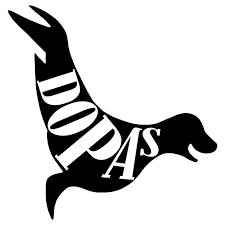
DOPAS
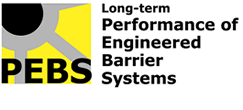
PEBS

LUCOEX

TIMODAZ

BIOMOSA

BORIS

BIOCLIM
CATCLAY
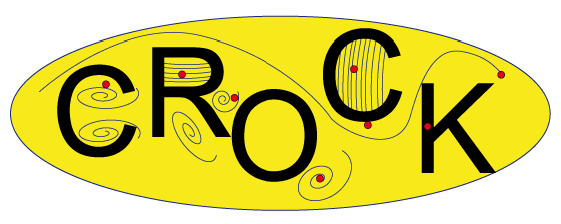
CROCK

ESDRED

FUNMIG

PREDIS



